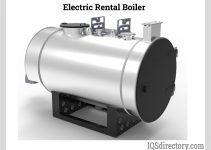Homeowners are constantly looking for ways to reduce their energy costs and improve the curb appeal of their homes. A metal roof is a great way to achieve both. This DIY guide will show you how to install metal roofing in your home in 2023.
Benefits of a Metal Roof:
Many homeowners choose metal roofing over standard asphalt shingles and other roofing materials because of the many benefits. You can expect a high ROI with metal roofs due to their durability, longevity, and aesthetic improvements.
Metal roofs are more durable than other roofing materials and can lose their value over time.
Strength and Durability
Metal is one the strongest and most durable materials on the planet, which makes it the ideal material to use for your roof. Garvin Metal Roofs can last 50 years or longer depending on what type of metal is used. This is due to their resistance to fire, hail and windstorms and other natural disasters that could damage your roof. Metal roofs are less susceptible to water infiltration than wood shakes or asphalt shingles.
Lightweight
Premium roofing materials like concrete and tile can add a lot of weight to your home’s structure, up to 750-900 lbs per square. This extra weight can cause problems down the line and could be detrimental to the structural integrity of your home. Metal is lighter at 50 to 150 pounds per square. This will reduce the home’s weight and make it easier to install.
Long-Lasting
Metal roofs can last for 50 years or longer. You will see a tremendous return on your investment with this long-lasting investment. You will be able to sell your house if you have a metal roof installed before you buy it.
Low Maintenance
Metal roofs are the best choice for homeowners who want a roof they can set and forget. They are more durable than other roofing materials and can withstand hail, wind and storms with little maintenance.
Energy Efficient
Metal roofs can be one of the most sustainable and energy-efficient options for your home. It’s an excellent insulator, so it will keep your home warm in winter and cool in summer. This insulation will help save you money by reducing the HVAC system’s workload to maintain the temperature of your home.
Fire Resistant
A metal roof is the best choice if fire protection is important to you. It is naturally fire-resistant. Metal roofs have a Class A fire rating, which is the highest rating possible. This means that they have one of lowest flame spread indexes.
Discounts
Many insurance agencies offer discounts for homeowners who install metal roofs. They are fireproof and reduce wind damage from hurricanes and storms. This will save you money and help the insurance company.
Materials & Tools Required for Metal Roofing
You will need specific tools and materials to properly install a metal roof. Although this is a general list, it’s a good place to start. If you don’t have the right tools, hiring professionals might be your best option.
Types Of Metal Roofing
There are many styles and materials for metal roofing. There are significant differences between the types of metal roofing that you choose and how they are installed.
There are five types of metal that are commonly used to roof:
Tin
Tin roofs are made of rolled sheets tin and are often installed in strips or as shingles.
Galvanized Steel
Galvanized steel is the most popular type of metal roof. It is lightweight and affordable for homeowners who wish to install their own roof.
Zinc
Another metal that is commonly used to roofs is zinc. Galvanizing is often done before the roof is installed to provide protection against the elements and fireproofing from damage caused by flames or embers.
Aluminum (or Copper)
Aluminum and copper are both expensive but can be very durable. Some types of these metals can even last for a century, depending on the circumstances.
Copper-Clad Aluminium
Copper roofs can be made more durable by cladding them with it. This material is also stronger than other options and will add beauty and charm to your structure.
Three standard designs of metal roofing:
Standing Seam
Standing seam metal panels are seamless designs that offer excellent durability and insulation. They can be installed by welding horizontal panels together.
Modular Panes
To install modular metal panels, you need to slot the panel into a galvanized frame of steel in order to create a tight seal.
Corrugated Panels
You attach corrugated metal panels to a substrate by using nails, screws or staples.
How to Install Metal Roofing
There are many types of roofing scranton pa. However, they all have the same benefits: durability, longevity and curb appeal. Installing a metal roof can be a great choice. However, it is possible to do it yourself with a few key steps. This is a step-by-step guide for installing a metal roof.
Measure Your Roof
Make sure your metal roofing is compatible with your home before you buy. It is easier to measure the area and take measurements before you buy panels or shingles. Once you have determined the size of the material you want to purchase (in inches), it is important to keep an extra in your inventory just in case.
1 Measure the Height of Your Roof
To determine the number of panels required for installation, measure your roof. Pre-cut lengths are available on some metal roofs. If not, you will need a measuring device such as a yardstick, measuring tape or a chalk and mark system. To get the best results, use a ladder to measure accurately.
2 Measure the Length Of Your Roof
Once you have determined how many panels are required for installation, measure your roof’s length and order the appropriate amount of panels or shingles. To measure accurately, start at one end. Take a measurement from the top to the bottom using your measuring tape. Take a measurement at one end, then measure the distance to the other end. Add these two measurements together to get your length.
3 Measure the pitch of your roof
Another important number to be aware of is pitch. This refers to the slope of your roof, or in other terms, how steep it is measured from a horizontal plane. You will need to choose the right type of metal roofing. A steeper pitch means that more material is required for installation.
All Your Materials and Tools
Once you have measured your roof, you can start shopping for the tools and materials you will need to install it. Refer to the list of tools and material above. Now you can determine how many materials are needed based on the measurements of your roof.
Metal roofing sheets: They are available in three lengths (30”, 24″ or 16’’) and can either be ordered in sheet form or pre-cut.
Metal Roofing Shingles are available in a range of widths, from 12” up to 24′. They also have the option to be shaped for use on steep pitches.
Galvanized Steel Frames are Available in Various Sizes. They are first installed to support the metal panels.
Take down the old roof
You are now ready to take down the old roof . It may be as easy as taking out screws and nails, or pulling up shingles depending on how the roof was installed. If your roof has a standing seam design, which requires welding, you will need to remove some panels before you can pull it off.
Repair Any Structural Damage
After you have removed the old roof, it is time to attach your new frame. This should be done before any structural damage or reinforcement is done. This will create a solid foundation to attach the metal panels or shingles to and secure them with nails, screws or staples, depending on the type of material.
Install Drip Edge
Once you have installed your frame, it is time to place the drip edge. A drip edge is a metal strip that covers seams between roof panels. It prevents water from seeping through the material or getting onto walls below.
Install your Metal Panels or Shingles
You can now install the metal panels and shingles. For stability, attach the galvanized steel frames to your roof’s edge. Next, use nails, screws or staples to fix them in place.
Screw-on brackets are required for metal shingles. These brackets help secure the roof’s shape and attach any precut lengths (saving you the hassle of measuring each piece individually).
Finish with Ridge Caps and Gutters
Finally, you can install the gutters and ridge caps. To protect your roof from water damage, ridge caps are made of metal or plastic and run along the roof’s top edge. A gutter, which is also a system to direct runoff rainwater away your home’s foundation, can be used as well. These are the final touches that will give your roof a clean look with no exposed edges or seams.



